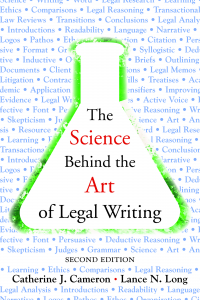
Considerations for using block quotations.
A survey of the advice on block quotations shows that it’s almost all negative: Don’t do it unless you must, say judges, legal-writing teachers, and experienced lawyers. So we should block block quotations? Why? Two main reasons.
Readers skip them. These readers include judges and their clerks. Admit it—you often skip block quotations when you read, too, so why would your readers be any different? If you put something important in a block quotation, you risk that it won’t be read.
They smack of laziness. Instead of paraphrasing, instead of summarizing, you used a block quotation—you copied and pasted. That’s the impression block quotations give, especially if you overuse them, and that perceived laziness turns readers off.
Despite these concerns, many well-written memos and briefs contain at least one block quotation and sometimes more. So the point is not to ban block quotations but to use them sparingly and effectively. Here are some recommendations.
Don’t ban block quotations; use them sparingly but well.
First, anything you block-quote must be vital. If statutory language is at issue or is crucial to your analysis, a block quotation is appropriate. And sometimes, block-quoting key statutory text can allow readers to get re-anchored in the relevant language by flipping or scrolling back to it without having to consult an appendix.
Likewise, if a binding case contains language of more than 50 words that’s directly relevant to your argument or powerfully persuasive for your position, a block quotation is appropriate. But if you harbor doubts about how vital the quotation is, you probably shouldn’t use a block quotation.
Even after you decide you need that quotation, try to shorten it to fewer than 50 words—just so you can avoid a block quotation. Yes, an embedded quotation of 49 words is still off-putting, but it’s more likely to be read because it isn’t a block.
Now, if the text is 50 words or longer and you’re certain you need it, edit it again so that when block-quoted, it’s not too long. No page-length block quotations, please. One thing more annoying than a block quotation is a long block quotation.
As you edit, show your alterations and omissions per Bluebook rules, but remember: heavy alteration or omission suggests that the quotation might be taken out of context, so go easy. One lawyer recommends that if you’ve heavily edited the block quotation, drop a footnote that contains the full text so readers can check your work.1
As a last step, write an inviting, persuasive lead-in to the block. The lead-in needs to show why the quotation is important or assert something the quotation will prove. In fact, it’s acceptable to paraphrase the quotation’s key point and use that paraphrase as a lead-in. Think of it like this: The lead-in should make the reader think, “Hmm. Is that so? Well maybe I should read this block quotation to be sure.” (Introducing quotations was addressed in this blog here.) One colleague suggested that the text after the block quotation might assert the key point, too. Readers who skip the block will still get the point—twice.
Are you going to strictly follow The Bluebook’s rule on length? In rule 5.2, The Bluebook says you must block only quotations of 50 words or more. But I say you can treat that rule as a recommendation, not binding authority. If you have a shorter quotation you’d like to highlight, you may set it off as a block if you wish.
Ultimately, you’re in charge of your block quotations, so use them sparingly but effectively.
Check out Wayne Schiess’s new book: Legal Writing Nerd: Be One.
1. Maureen Johnson, To Quote or Not to Quote: Making the Case for Teaching Law Students the Art of Effective Quotation in Legal Memoranda, 56 S. Tex. L. Rev. 283, 306 (2014).

